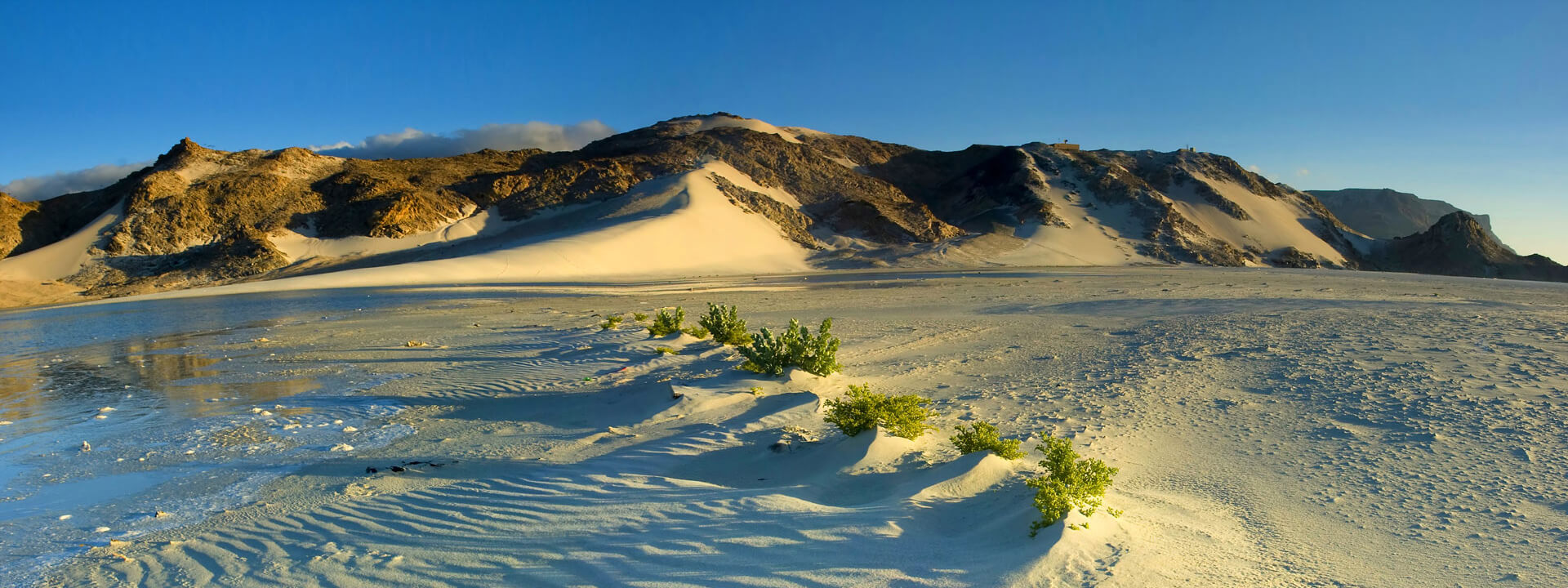
When most people think of remote island holidays, they probably cast their minds to the Caribbean, South Pacific atolls, or the more out of the way backpacker haunts of South East Asia. But that’s not our style.
Forget notions of sipping cocktails in the Maldives, or all-inclusive resorts. For a really remote island holiday, there are richer pickings to be had, far more off the beaten track and interesting, that you’re unlikely to find in any travel agent’s window display. From the deserts and mountains of Yemen’s spectacular island of Socotra to the old world traditions of Kihnu Island in the Baltic Sea, we’ve picked out some of our favourite options.
1. São Tomé – São Tomé & Principe
São Tomé sits off the Central African coast, a few hundred kilometres west of Gabon. Unpopulated until the Portuguese arrived in the 15th century, it became an important centre for the slave trade across the Atlantic, and today its inhabitants are largely descended from those early arrivals and the Portuguese settlers who established large sugar and coffee plantations here.
It’s not a busy place – the pace of life here is relaxed, or ‘leve-leve’ as the islanders say, and the eponymous capital is one of the most laid back African capitals you can imagine. With most villages and settlements lying along the coast, the interior is dominated by thick forest, waterfalls and peaks, home to an intriguing variety of endemic species, while on the coastline itself, enormous turtles come to lay their eggs on sandy beaches. The remnants of colonial rule are evident in the grandiose houses, known as rocas, which guard the old plantations, many fading into the all-conquering vegetation, others delightfully restored and offering a unique place to stay for the night. São Tomé’s attraction lies in its casual charm, its easy-going nature, and the abundance of natural wealth in its forests, pristine beaches and pretty coastline. It’s easy to fall into the gentle rhythms that typify the island.
How to get there?
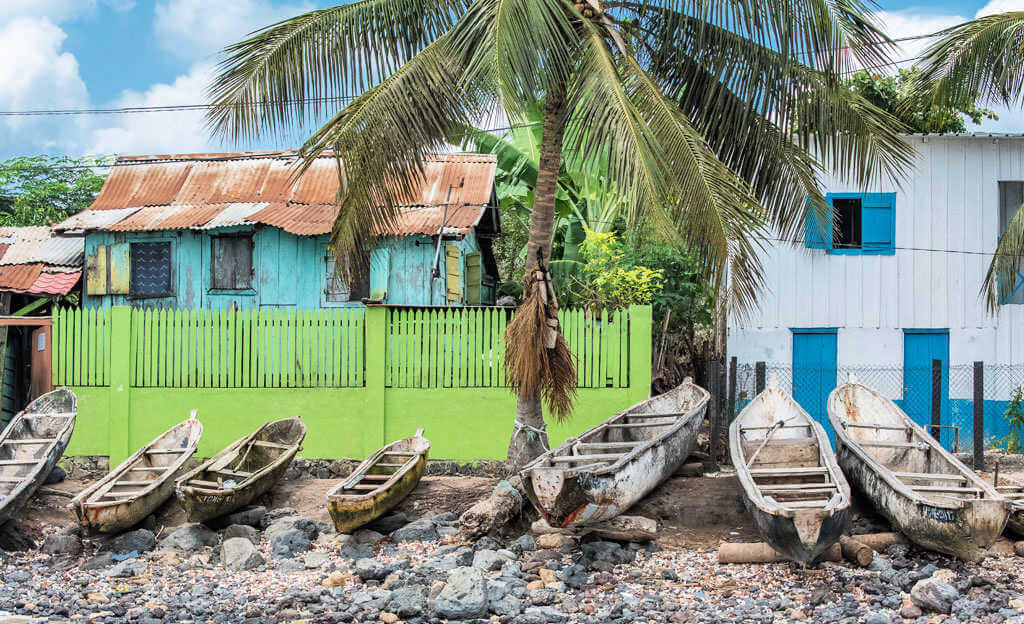
2. Comoros – Comoros Archipelago
The Comoros Archipelago is made up of four main islands – three of which (Grande Comore, Anjouan and Moheli) form an independent country, while the fourth, Mayotte, remains a French overseas territory. Largely overshadowed by its much more famous island neighbour, Madagascar, Comoros is one of the least visited countries in Africa, not helped by the paucity of available flights. Originally settled in the 5th century by seafarers from Malaysia and Polynesia, today its culture is a mix of Arab and African – for centuries it was ruled as a collection of sultanates by Arab settlers, with Africans being brought here as part of the slave trade.
Comoros is a good contender for the epithet of ‘tropical paradise’, with deserted beaches fringed with swaying palms, clear turquoise waters and picturesque rural villages and plantations for the spice ylang ylang. It’s a low key place where you don’t have to worry about following the tourist trail – you’ll be making it, exploring fruit-filled markets bustling with women in colourful dresses, wandering through the remains of old sultan’s palaces and perhaps even climbing the active volcano of Mount Karthala. Its greatest claim to fame is the discovery of the deep sea prehistoric fish the coelacanth, long thought to be extinct until one was caught here in 1938, and the marine life here is a treat for anyone keen on the underwater world.
How to get there?

3. Kihnu Island – Estonia
A world away from the tropics is the small island of Kihnu, a few kilometres off Estonia’s south-east coast and with a population of just 600 or so. Here the pace of life is delightfully slow. It feels a few decades behind the mainland, so it’s a good place to get to grips with Estonian customs that are all too easily hidden by the pace of the modern world. Many of the older women still wear the colourful traditional clothes, and the main form of transport on the island is motorbike and sidecar. With the menfolk of Kihnu often away for long periods of time, fishing or hunting marine life on the ocean, women have taken a dominant role in Kihnu’s daily life, often stepping in to perform traditionally male roles in the community.
Kihnu accepts tourism on its own terms, with visitors encouraged to immerse themselves in the local culture, and the island lacks hotels and restaurants, instead basing its limited tourist infrastructure on charming old farmsteads where you can be sure of home-cooked meals and warm hospitality. It measures just seven square miles, and within a couple of days you’re likely to meet almost everyone who lives here – Kihnu is a step back in time to an age of Europe that has disappeared elsewhere.
How to get there?

4. Socotra – Yemen
At 3,650 sq km Socotra is easily the largest Yemeni island, as well as one of the most inaccessible – this is one of the most remote island holidays one could imagine. Lying 510km southeast of the mainland, close to the ravaged shores of Somalia, the island has developed in near total isolation from the rest of the world. Rumoured to have once been a refuge for dragons, it continues to provide a home for all manner of extraordinary fauna and flora, much of which is found nowhere else. Because of the number of its endemic plants and creatures, it’s been described as the ‘Galapagos of the Indian Ocean’. While this is a little optimistic, there is no denying that Socotra is a unique and otherworldly island. It’s the kind of place where people speak a language unknown to anyone else, where the knowledge of how to make fire by rubbing sticks together is still common and where the elderly recall days when money didn’t exist.
Until the construction of an airport in 2002, the island remained almost as unknown as it did in the days when adventurers came here to do battle with dragons in their search for the secret of eternal life. Today the dragons might be gone, but the trees are said to still bleed for their memory, and the secret of eternal life remains hidden away in a cave somewhere on Socotra.
How to get there?
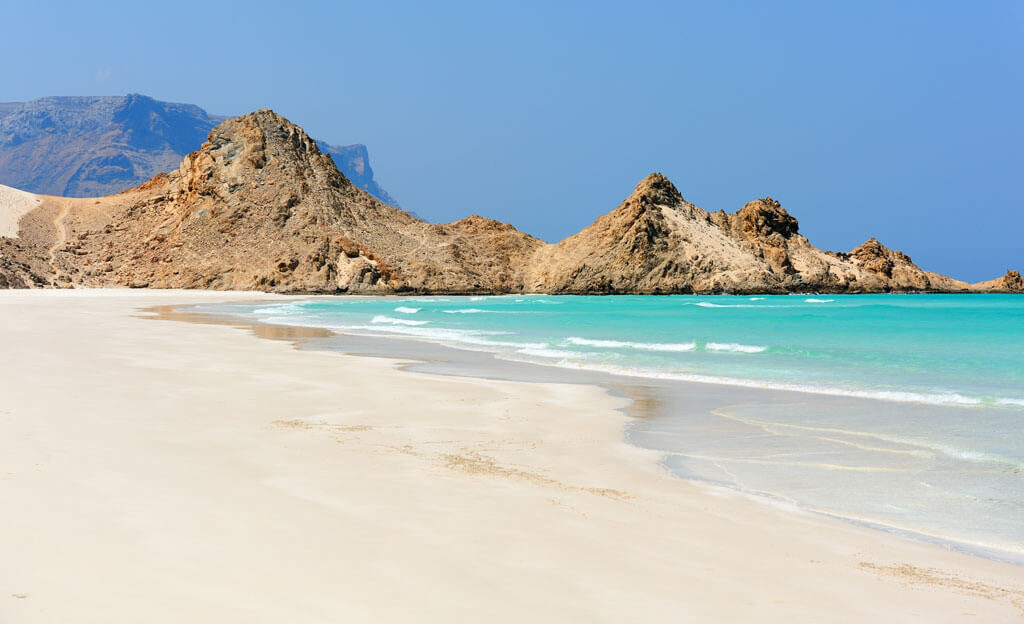
5. Ometepe – Nicaragua
Located on Lake Nicaragua, Ometepe is composed of two volcanoes, joined in the middle by a thin, flat isthmus. The northern half of the island is dominated by the cone-shaped, active volcano Concepción, whilst looming over the southern half is the extinct volcano Maderas, swathed in cloud forest with a lagoon sitting in its crater. Isolated from the rest of Nicaragua, Ometepe is a beautiful island, rich in wildlife, entrenched in history and adorned with wide beaches. Past Indian inhabitants regarded Ometepe as their promised land and a sacred island.
Spread all over the island are pre-Columbian artefacts left by the Chorotega, Nahuatl and Mayans and due to the many petroglyphs and stone idols on the island, Ometepe is considered as one of the great rock art sites of the world. The Conquistadores converted the Indians to Catholicism but many old customs and beliefs were kept; Ometepe sees more religious and folk festivals than anywhere else in Nicaragua, and is a fantastic place to see traditional local culture.
How to get there?
Colonial Cities and Lava Lakes
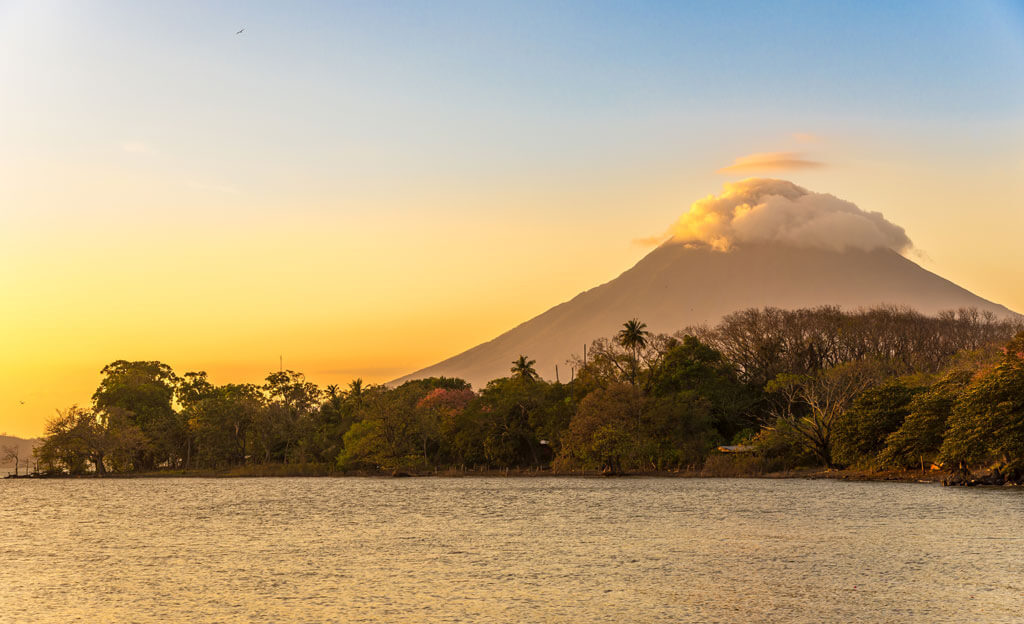
6. Bioko Island, Equatorial Guinea
Equatorial Guinea is one of Africa’s most unusual countries, in a number of ways, not least because it is split between a mainland portion and the large island of Bioko, where the capital is located. Known as Fernando Po during the Spanish colonial era, Bioko is a volcanic island covered in lush rainforest, rich in wildlife – especially primates. If you discount Western Sahara, it’s the only former Spanish colony in Africa and has a slightly different feel to most of its neighbours.
Best known for its oil wealth and the abortive coup led by mercenaries in 2004, Equatorial Guinea is a curious place, and until recently has been difficult to visit, only really opening up for tourism within the last few years. Turtles come to lay eggs on its black sand beaches, while the island of Bioko is one of Africa’s most biodiverse areas with species including the Bioko red colobus and the colourful drill monkey, amongst others. Its capital Malabo is an odd mix of glitzy office buildings, fading colonial architecture and ramshackle markets, and in places barely feels African at all, until you turn the corner. Long known as one of the continent’s most ‘challenging’ countries, Equatorial Guinea is one for the real Africa enthusiasts.
How to get there?
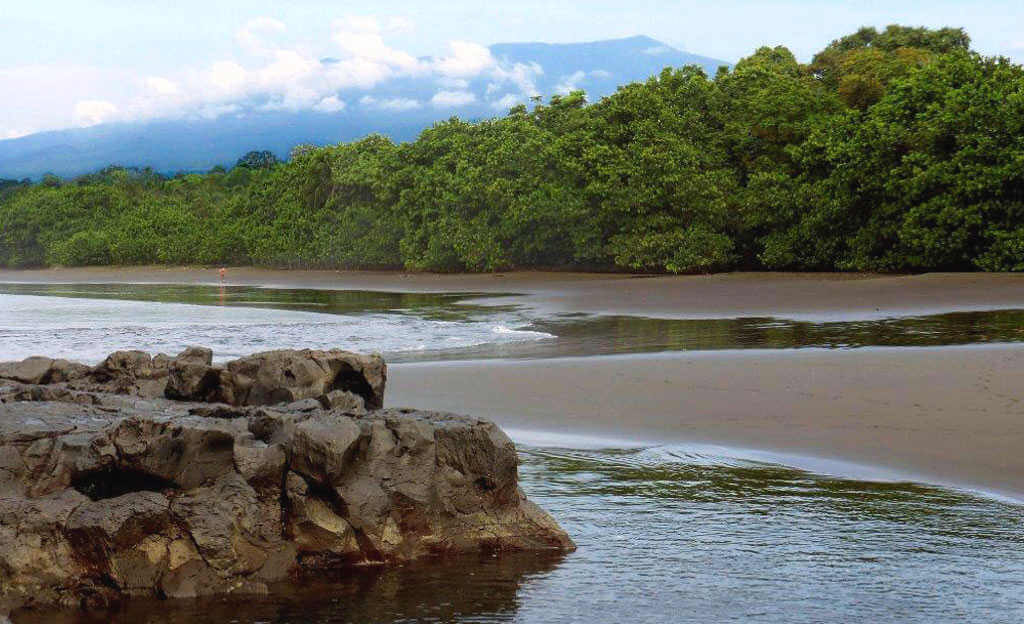
7. Idjwi Island, DRC
Idjwi sits in the middle of Lake Kivu, on the Congolese side of the border. Considerably less frenetic than the ‘mainland’, a large proportion of Idjwi’s population are pygmies, whose folk tales have it migrated from the Rwandan side several hundred years ago to seek peace from the depredations of their neighbours. Today they live in a state of semi-feudal society, with many villages falling under the ‘protection’ of their Bantu neighbours, who followed them to the island.
The island is home to very few vehicles, the most common being motorbikes which are well suited for negotiating the rough dirt tracks. Ramshackle villages appear every few kilometres, and the people here are incredibly welcoming to visitors – this is the DRC for beginners. Being an island, one of the main sectors of the economy is fishing, and watching the sun set over Lake Kivu while local fishermen cast their nets in the fading light is a rather magical experience.
How to get there?
Gorillas, Chimps and Volcanoes

8. Bijagos Islands – Guinea-Bissau
The Bijagos Islands are the jewel in tiny Guinea-Bissau’s crown, an archipelago of more than forty islands that have been declared a UNESCO World Heritage Site. Covered in dense forest and mangroves, the islands are home to some of West Africa’s least adulterated cultural traditions, the islands serving to isolate the inhabitants from too much colonial influence. This is best seen in some of the traditional mask dances to be found here, including the ‘vaca bruto’ dances where participants act out the roles of wild bulls. Many of the communities here are based on a matriarchal structure, comparatively rare in Africa.
The Bijagos also contain enigmatic wildlife – the rare ‘saltwater’ hippo being the most famous, rather elusive but sometimes found swimming along the shorelines and between the islands. On the remote island of Joao Viera turtles come ashore to lay their eggs, and birdlife is prolific.
On Bolama, old Portuguese buildings are slowly crumbling into the earth, and goats wander the ruins. The Bijagos Islands are one of West Africa’s most atmospheric and culturally fascinating destinations and the very epitome of remote island holidays.
How to get there?
West Africa Explorer
Marrakech to Bissau

9. Komodo, Indonesia
The island of Komodo, together with other islands such as Rinca, Komodo and Sumbawa, is part of the Komodo National Park, officially declared a World Heritage Site in 1986. The current, wind and wave exposure result in an incredible variety of coastal and marine habitats and it is home to the world’s largest land-dwelling carnivorous lizard, the famous Komodo Dragon.
The creature’s existence was first discovered in 1912 and its ferocious appearance and behaviour when feeding is thought to be the source of many earlier folklore tales of fire-breathing dragons. It can reach up to 3m in length and weigh over 200 kg, travelling at speeds up to 15mph. It carries virulent bacteria in its mouth which eventually immobilises its prey once bitten. The marine habitat supports more than 1,000 species of fish, some 260 species of reef-building coral and 70 species of sponge.
How to get there?
Temples, Dragons and Volcanoes
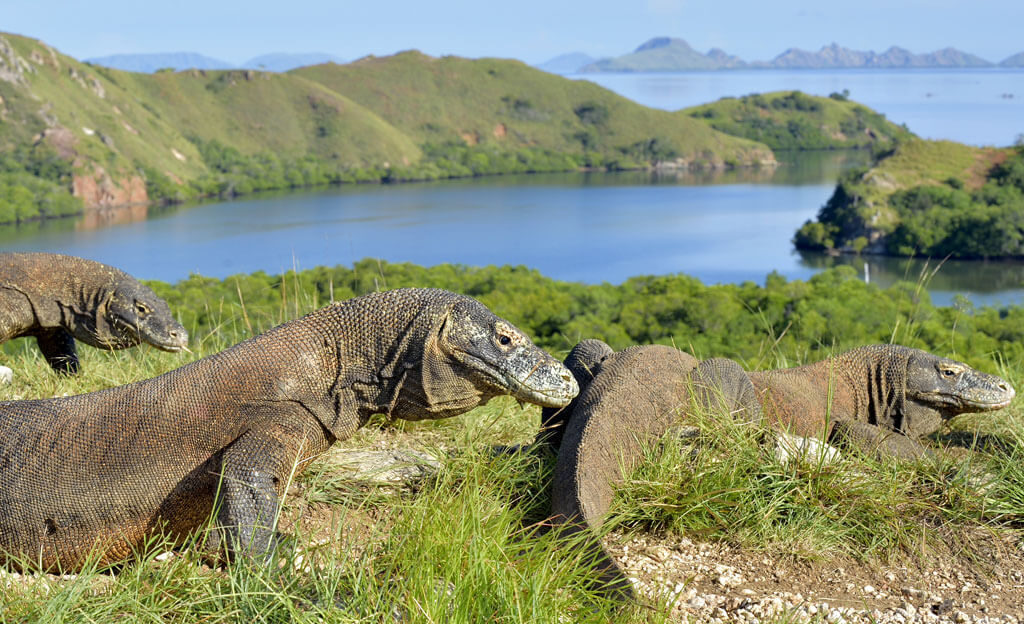
10. Goree Island, Senegal
Not far from the Senegalese capital Dakar lies the tiny island of Goree, less than a square kilometre in size but occupying an important place in West African history. First occupied by the Portuguese in the 15th century, Goree became a major trading post for European powers – particularly for the trans-Atlantic slave trade. Today the ghosts of this period remain, with old colonial buildings lining the sandy streets, and the original dungeons providing a haunting reminder of the horrors that thousands must have experienced in their last days on the African continent.
Goree has also become a centre for local artists in the past few decades, with a number of small galleries showcasing paintings and sculptures, as well as some interesting museums. Goree is a fantastic place to escape from the hustle and bustle of Senegal’s mainland, well worth the short boat ride it takes to get here.
How to get there?
Senegal Uncovered
West Africa Explorer
Marrakech to Bissau

Remote island holidays with Native Eye
We specialise in unusual destinations, off-the-beaten-track adventures and traditional, often tribal cultures and offer some of the most exciting and ground-breaking small group adventure tours on the planet. If you would like to find out more about any of our remote island tours, ring us on 01473 328 546 or e-mail using our contact form.
If our remote island holidays blog has whetted your appetite, check out some more recommendations from Wanderlust magazine.
Other blog posts you might enjoy:
Small group tours – our top 15
Native Eye’s favourite desert adventures
Remote travel destinations – top trips
Best cultural festivals in Africa for intrepid travellers
The world’s most unusual travel experiences
West Africa holidays for first-timers

